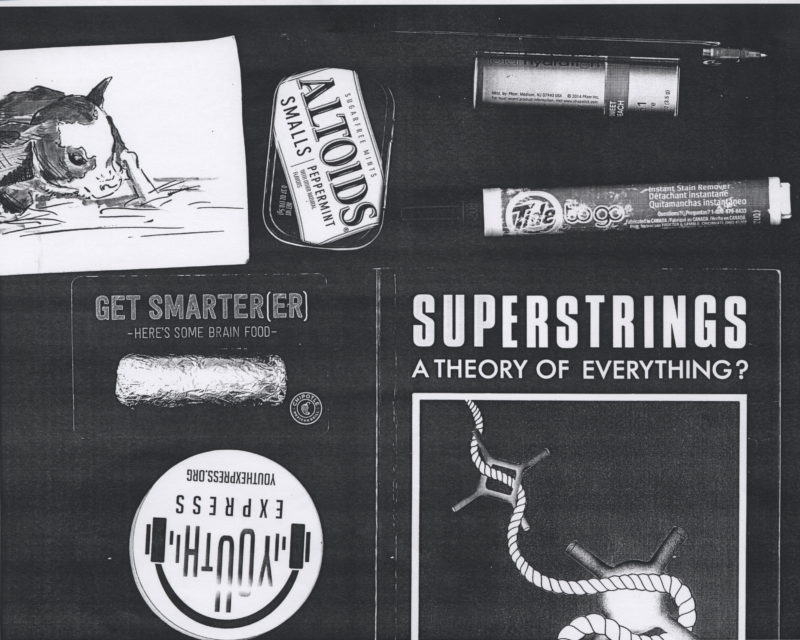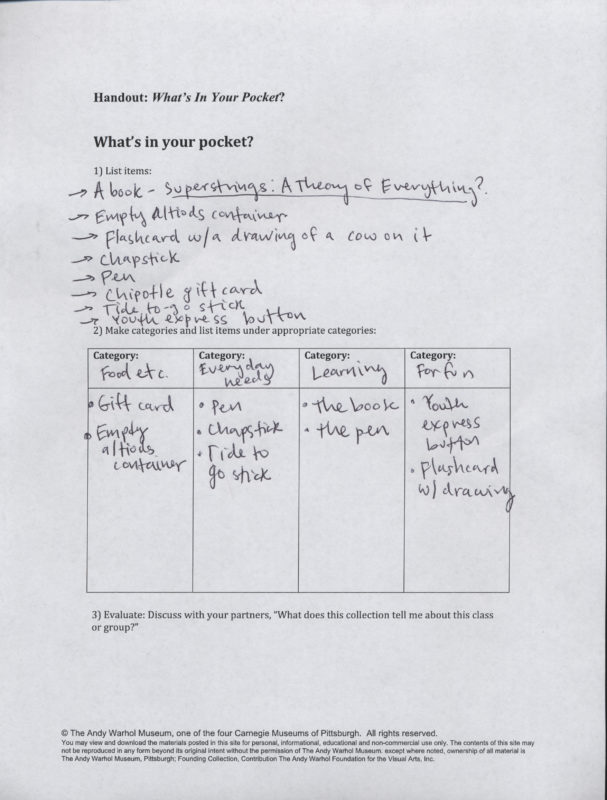The Pocket Project
I want to throw things right out the window as they’re handed to me, but instead I say thank you and drop them into the box-of-the-month. But my other outlook is that I really do want to save things so they can be used again someday.
Student Example of Pocket Project
Materials
- Photocopier or scanner with printer (digital cameras or phones can also be used)
- Writing utensils
- Place to hang up images
- Pocket Project handout
Assessment
The following assessments can be used for this lesson using the downloadable assessment rubric.
- Communication 3
- Creative process 1
- Critical thinking 2



